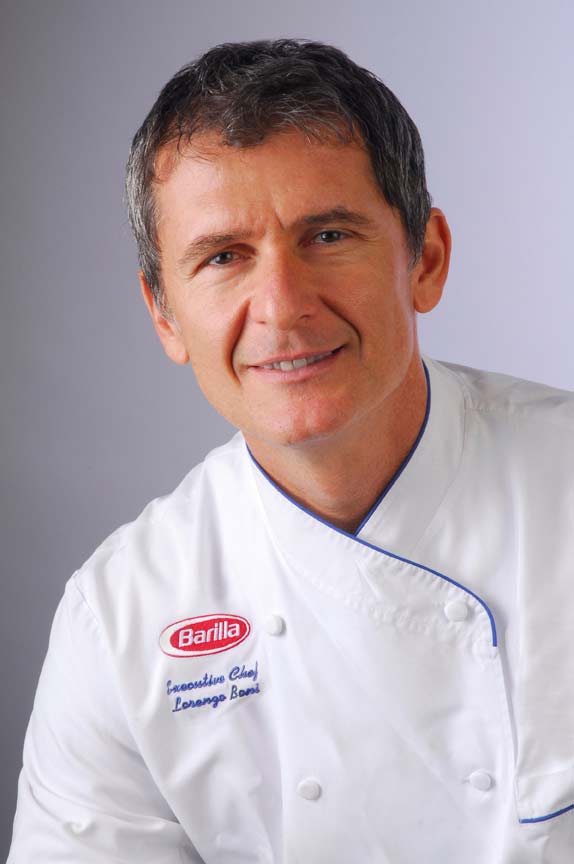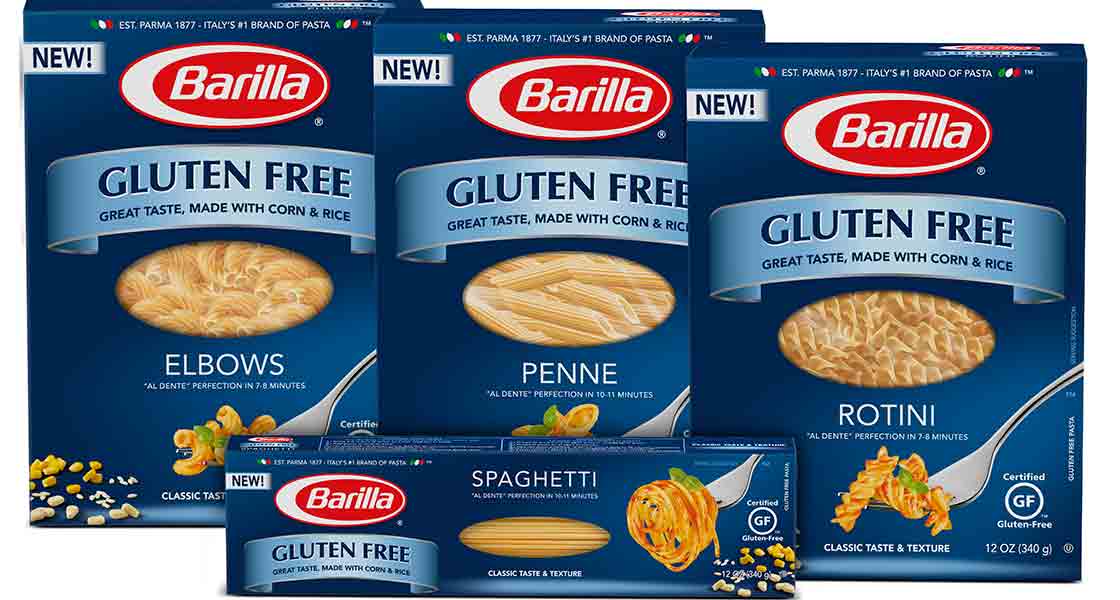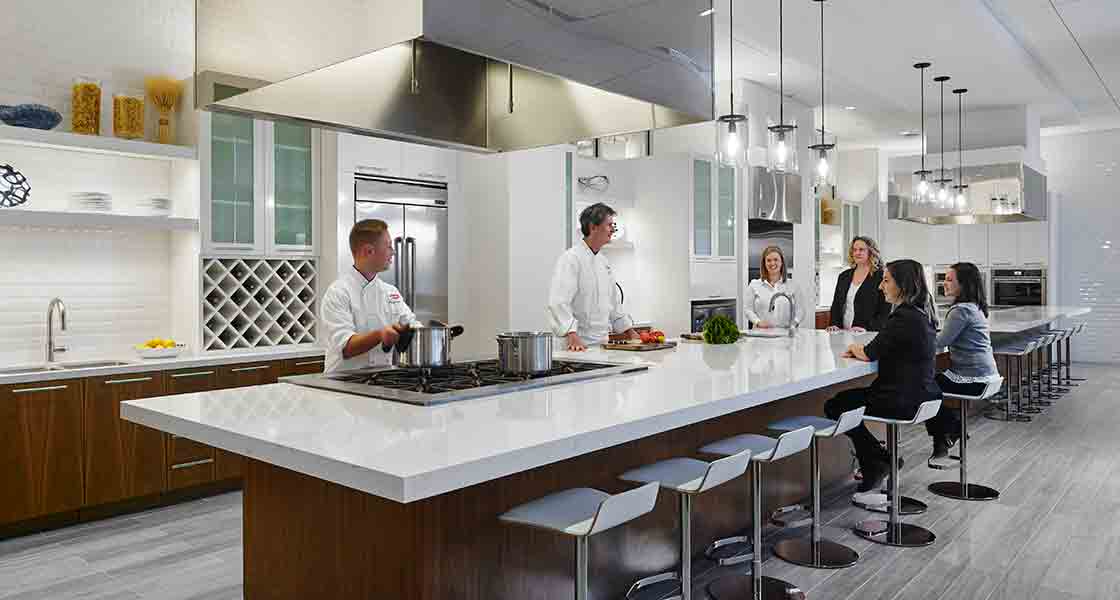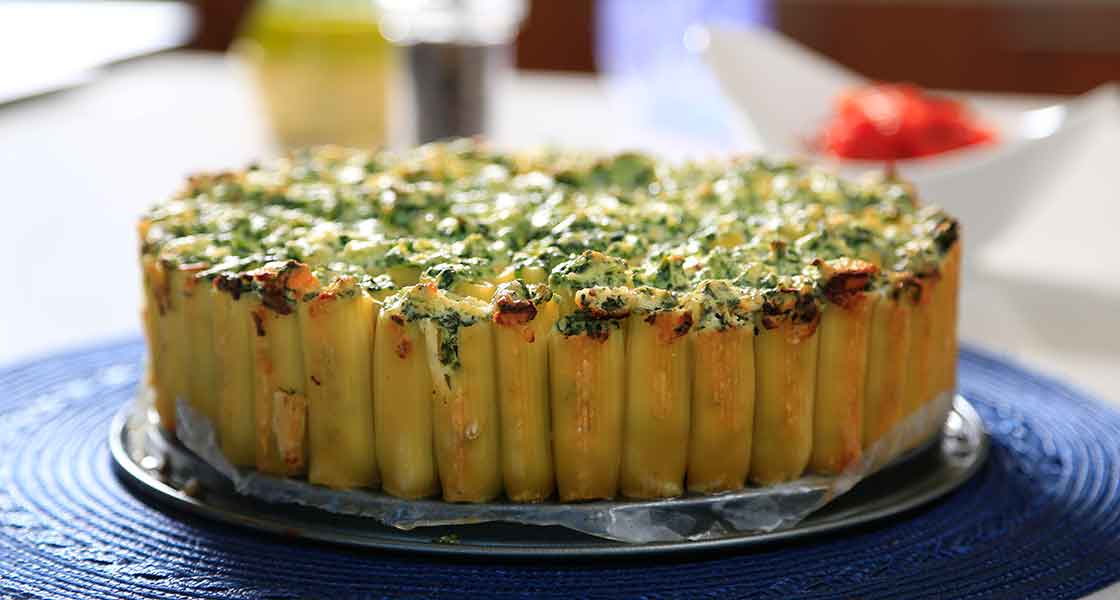Pushing Pasta Past Tradition
CULINARY POINT OF VIEW
Chef Lorenzo Boni grew up with a passion for Italian food in Bologna, Italy. Boni joined Barilla in 1999 at their world headquarters in Parma, and then in 2003, he was promoted to executive chef for Barilla America. For the past 13 years, he has been responsible for product and recipe development, as well as managing the culinary execution of all Barilla-sponsored events. We recently spoke to Chef Boni about his work to innovate and recreate traditional pasta to fit the lifestyle of today’s consumers.

Kelly Hensel: You’ve worked in restaurants and owned your own in Italy. What was it about the Barilla job that lead you away from the restaurant world?
Lorenzo Boni: I had my own restaurant in Bologna [Italy], not far from the Barilla headquarters in Parma and they asked me to consult with them on some projects. At the time, they were trying to develop a pasta salad with condiments for the United States and because they knew I had worked in New York and I knew a little bit about marketing, they asked me to be a consultant. It was a very different world than what I was exposed to in the restaurant world. Eventually, I started working full time for them and sold my restaurant. Then they asked me if I wanted to go work at their United States headquarters, and I said yes.
Hensel: What does your job as executive chef entail? What might a typical day look like for you?
Boni: Thankfully, my day-to-day varies. Basically, I overlook anything that has to do with actual food. We have a beautiful new state-of-the-art kitchen and right next to it I have a photo studio. Any recipe that the company needs for events, PR purposes, in-store promotions, media advertisements, and the website—everything comes through us in the kitchen.
I mentioned that we have this photo studio because I love food photography, and I actually do a lot of the photography for the company. My time is split between retail, supporting all these activities, and PR events. I do a lot of cooking demonstrations and client support to educate them on how to best handle our product in more industrial settings. And then I’m in the kitchen testing recipes, which we test at least twice to make sure they work really well.
Hensel: Are you involved in the development of a new product line from the very beginning?
Boni: Yes, absolutely. I report directly to the vice president of research and development for the Americas, so I work with him and the scientists. In the kitchen we’re responsible for two phases in the product development process. In the initial phase we develop a gold standard. For Barilla the food has to taste great before anything else. Then, as our recipe is taken to a more industrial procedure we become keeper of the quality. We test it throughout the process to make sure we stay as close as possible to the gold standard.

Hensel: Can you talk about the challenges you faced when developing the gluten-free line?
Boni: That was a very challenging project. The first requirement for us was to come up with pasta that once it was paired to the sauce would resemble real pasta in both taste and texture. It was a long process. We really took our time on the development of it. In fact, I took a count of the number of tastings we did for that product and we had more than 400 tastings in our kitchen alone. That means that more than 400 different formulas were developed.
Then the other challenge was being able to provide all of this but at a competitive price. We didn’t want to be on the top of the shelf or just in some specialty stores. In the end, we came up with this blend of rice flour and two different corn flours—white, which gives a little lighter color and flavor to the pasta, and yellow, which has a more distinct color and flavor. We didn’t want to use too much yellow corn because we didn’t want to have pasta that tasted like polenta, so we blended it with white corn.
Also, you probably know that Barilla is non-GMO, so we also had to make sure that we could source all of that non-GMO corn. It’s a really complex teamwork between logistics, marketing, and our team of R&D to make all of these factors come together.
Hensel: What are the characteristics of good quality pasta?
Boni: I would summarize it in three words: color, texture, and taste. To achieve these it takes a lot of work and requires high quality ingredients. It also means that you have to deliver consistency, which is very difficult to achieve. First is appearance—people eat with their eyes. We have some research on the foodservice side that shows when people see a pasta that is whitish or translucent in color they think it’s overcooked and poor quality. So, we want a nice golden color. Texture is also key and it must always be al dente. It’s better for your digestive system, but it also just tastes better. The taste comes from great quality wheat and a good process in terms of drying the product. Those are the keys to quality pasta.

Hensel: Consumers have a lot of choices today when it comes to pasta. On one side there’s artisan and fresh pasta and on the other side of the spectrum there’s private label brand pasta. What keeps Barilla one of the top pasta makers in the world?
Boni: I think it really comes down to value for the money. We provide a great product at an affordable price for everyone. On the artisan side there are some great tasting pastas out there, but they’re not consistent and you might have very different experiences if you only use those pastas. On the private label, less expensive side there are some pastas that are very poor quality. At Barilla, I think we found that sweet spot of high quality and affordable price and we offer a great variety of different types of pasta for everyone.
Hensel: Barilla launched the shelf-stable microwaveable meals around four years ago and just recently the Pronto line of pastas. How important is convenience in developing new products and recipes for the American market?
Boni: Well, we know that lifestyle is changing. Millennials are asking for a faster way of producing food for themselves. So, we are open to these changes and are trying to deliver what people want. At the same time, quality is always the priority. What I always say is that the Barilla brand is also the last name of our shareholders. They try every single product before it goes to market and they won’t allow anything to be released if it’s not up to their high standard.
So, having said that, we definitely keep an eye on convenience and develop products to deliver that need, but we also found that there are consumers that—for certain occasions—prefer a pasta that has more of a story and tradition behind it. So, we developed Collezione, which includes regional varieties of pasta made with traditional techniques. We use a bronze dye to make this line, which offers more resistance to the dough as it goes through. The pasta surface ends up a little rougher and therefore it has more of a homemade look and feel to it.
We’re trying to target different occasions and different types of consumers. Pasta really appeals to pretty much everyone.

Rigatoni Pie
Ingredients:
- 1 box Barilla Collezione Rigatoni
- 1 lb fresh ricotta
- 1 bag baby spinach, steamed and chopped thin
- ½ cup Parmigiano cheese, grated
- 1 egg
- 2 cups Barilla marinara sauce
- Salt, black pepper and nutmeg to taste
Method:
- Place a pot of water to boil, cook rigatoni 2 min shorter than the recommended cook time, drain, and cool on a sheet pan.
- Meanwhile mix ricotta with spinach, 1/3 cup of Parmigiano cheese, 1 egg, salt, pepper, and nutmeg. Place the filling in a pastry bag and fill all the rigatoni.
- Place the rigatoni side-by-side vertically in a 7-inch cake mold lined with parchment paper. Sprinkle the top with the remaining cheese.
- Bake in the oven at 400°F for about 45 min or until slightly brown on the top. Move on a platter and serve with marinara sauce on the side.


